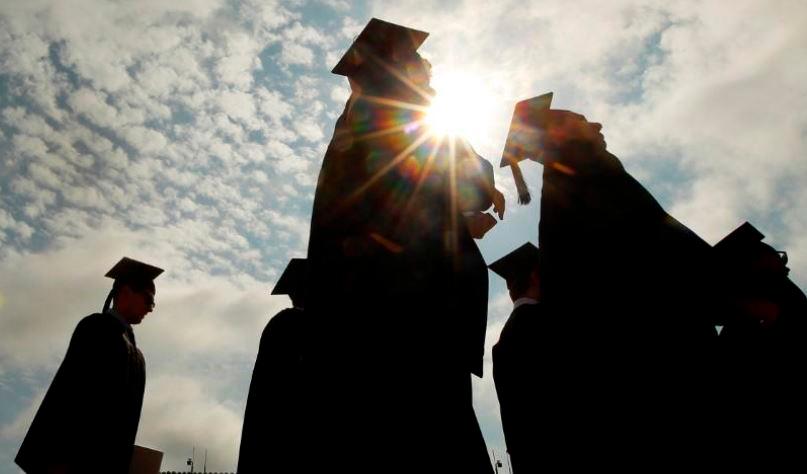MALAYSIA is a developing country, and it enjoyed an average per capita annual income of US$11,300 (RM51,613) in 2021. In theory, the level of economic development of a country is strongly related with the proportion of students in its population enrolled in higher education. For example, in 2015, 85% of high school graduates in the US entered colleges and universities, which constituted one of the highest rates in the world.
Dramatic rise in tertiary education students
Over the past 40 years, the proportion of high school students in Malaysia entering tertiary education has also increased rapidly. The World Bank statistics show that the proportion of high school students in Malaysia attending higher education rose dramatically from 4% in 1980 to 7% in 1990, 26% in 2000, 37% in 2010 and 43% in 2020.
The leaps that occurred in the 1990s were mainly due to the government’s massive increase in the intake in public universities and colleges, the sharp rise of profit-oriented private universities and colleges, and the general improvement of people’s living standards. The latter in particular has strengthened the capability of parents to send their children for higher education.
For students from relatively poor families, the government’s relaxation of the education loan policy, known as PTPTN (National Higher Education Fund), has also allowed a large number of children of all ethnic groups who meet the admission standards to get a place.
As of May, there were as many as 585 public and private universities/colleges in Malaysia, of which 73% were private, but 330 of them belonged to small training centres or colleges.
Some 50 years ago, tertiary students were perceived as social elites. The popularisation of tertiary education has since expanded to such an extent that this elitist perception has been invisibly nullified. This development has greatly reduced social stratification between people, which is basically a good thing.
As a whole, more tertiary education graduates have brought about not only generic individual quality and work efficiency, but they have also greater capability to earn higher incomes, helping the nation to move further up the knowledge economy, towards an advanced stage of development.
It is true that the number of tertiary students has grown at an astonishing rate. However, their quality has not necessarily improved by leaps and bounds, even though they have more technological means and sources of knowledge and information to help them today. How has this problem arisen?
High unemployment rates
According to a survey conducted by the Higher Education Ministry in 2021, 15% of tertiary graduate students were unemployed. They came from public and private tertiary institutions majoring in many disciplines such as social sciences, business, law, engineering, mathematics and computer science.
In addition, one-third of graduates who are employed are in semi-skilled or low-skilled occupations. The reason is mainly because what they have learned do not match their jobs, or the courses studied do not meet the market demand or are even outdated. In this regard, University of Malaya reacted quickly by removing 20 courses or replaced them with new content that meets market demand.
In our rapidly changing global economy, which requires constant knowledge updates in the workplace, it is unrealistic to expect universities to pre-plan accurately the curriculum needs that will arise in the future.
In response to this issue, the education ministries in some advanced countries have begun to cancel the separation of arts and sciences in high schools, which was considered a golden rule in the past. They have a strong belief that high school students should be equipped with both liberal arts and knowledge of sciences. Doing so will provide them with more choices when they enrol in a university, as well as more opportunities for career change in the future.
Indeed, flexibility and greater absorptive capacity are seen as key to meeting the needs of lifelong learning.
Malaysia’s unemployment problem of tertiary graduates is not merely due to the gap between their majors and employment needs, and too many graduates from certain disciplines. The work attitude of young people today must also be accounted for.
Generally speaking, people always like to associate tertiary students with white-collar jobs, and technical vocational trainees with blue-collar jobs. It is understood that not only Malaysian tertiary graduates are reluctant to take up blue-collar jobs, but even technical and vocational school graduates hold the same attitude.
Way ahead
This negative state of affairs can be attributed to two factors. One is that blue-collar jobs have low social status and are 3D (dirty, dangerous and difficult), even though blue-collar workers may be paid more than some white-collar jobs.
Secondly, over the past 40 years, the Malaysian manufacturing, construction and agricultural sectors have fallen into a severe foreign worker dependency syndrome.
At present, employers rely heavily on foreign labour to reduce costs, but this also inhibits the rising wages of local blue-collar workers and acts as a deterrent. To change this trend, it is necessary for the government to amend labour laws and gradually improve the treatment of local blue-collar workers.
Naturally, the decreasing number of foreign workers will lead to an increase in the cost of capital in the future, but in the national interest, is this not a strategy to improve the social status of local blue-collar workers and take a step forward towards the threshold of an advanced nation?
Prof Dr Wong Tai-Chee, Deputy Vice-Chancellor, Berjaya University College. Comments: letters@thesundaily.com









